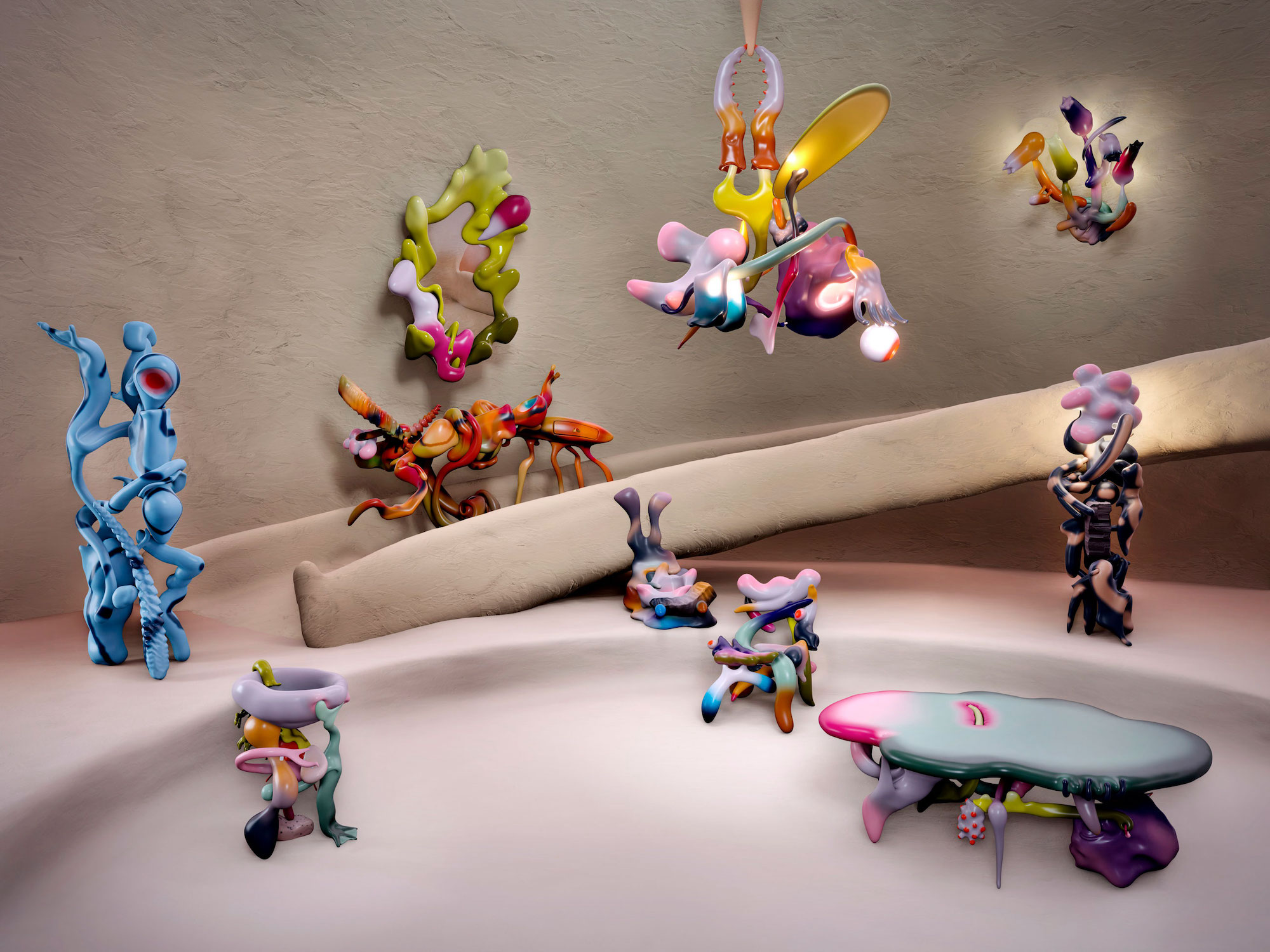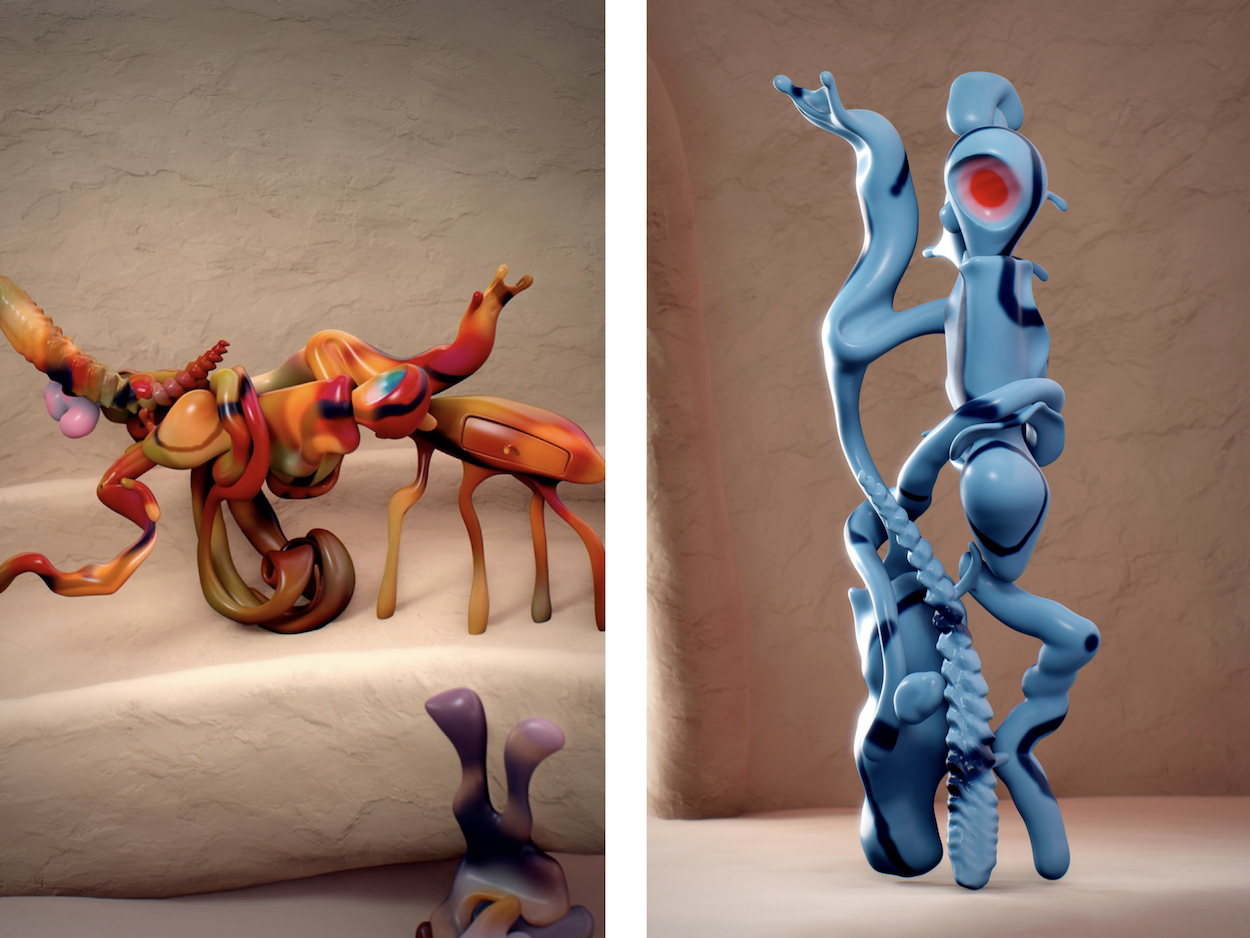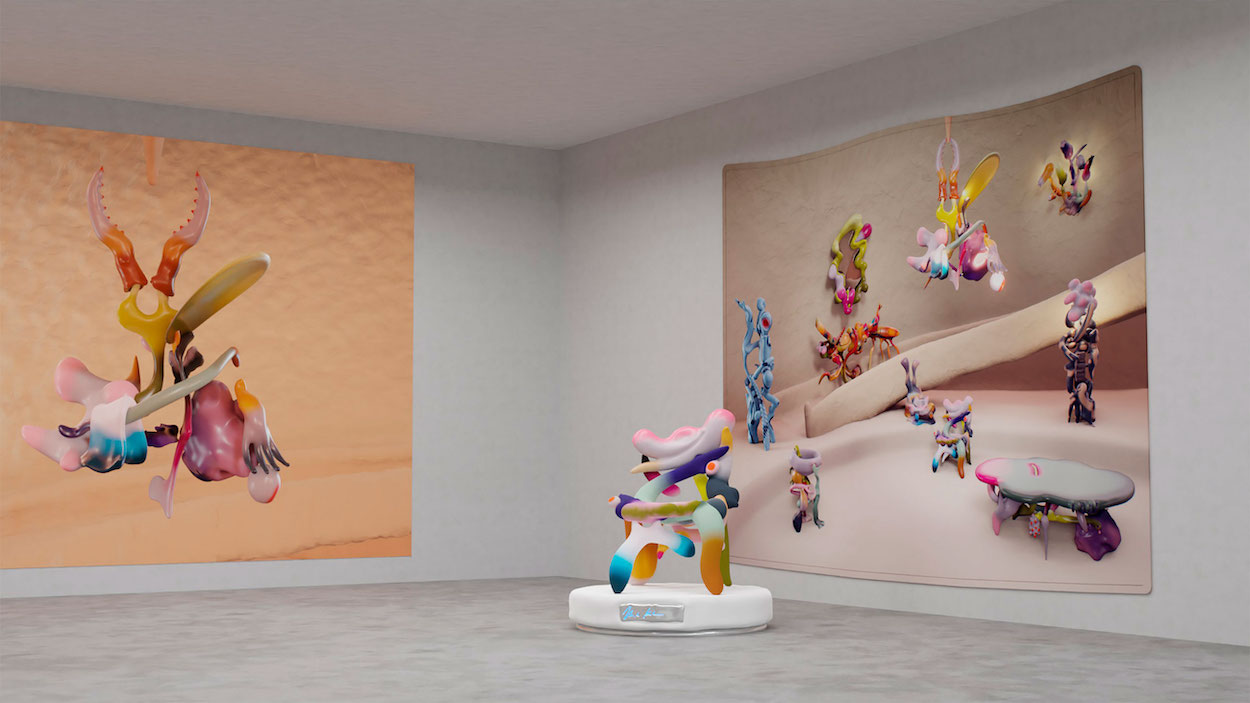“I’m so not a digital person,” Misha Kahn joked last February, one month before the coronavirus pandemic ground the world as we knew it to a screeching halt. The artist-designer and material polymath is known to rummage through Brooklyn junkyards and the Rockaway Beach shoreline to source detritus for vibrantly brash sculptures that range in scale from lo-fi collage and improvisational molds to virtual reality and robotics. Several appeared in “Soft Bodies, Hard Spaces,” a solo exhibition at Friedman Benda, in which he experimented with virtual reality software for the first time to create memorable pieces such as a storage unit sprouting mangled aluminum limbs and chasms filled with gumdrop-like glass blobs. “Sculpting without the constraints of gravity is so liberating. It introduced another realm to my work,” he continued. “After using it, drawing on paper almost feels degrading.”
It’s unsurprising to learn that he quickly warmed up to the idea of non-fungible tokens, which experienced a meteoric rise to prominence in the spring. (For the uninitiated, we published a handy guide that demystifies the buzzy art-world phenomenon.) Much like virtual reality, the medium granted Kahn the freedom to dream up objects unbound by physical constraints. “I was struck by how much you can see when you’re in this landscape where literally anything can exist because it’s beyond anything we’ve known,” he tells his partner, Nick Haramis, in an interview for Christie’s, which is hosting an auction of his NFTs that kicks off on August 18. “And yet, most of it is pretty tethered to knowable scenes—things that are familiar but made slightly more magical in certain ways. I wanted to see how far I could push furniture and the idea of furniture and still have people vaguely recognize the gesture of a floor lamp or the idea of a chair.”
Ten such objects debut in the auction, called “Furniture Unhinged,” which Christie’s notes is the first-ever design NFT auction at a major house. Each NFT comprises a 3D model of Kahn’s forward-thinking furniture rendered as an FBX file together with a corresponding single-channel “trophy” video of the object spinning on a pedestal. They’re presented together within a virtual, off-world architectural space of his own design, which feels like a pared-down foil to the imaginative, lustrous worlds he normally concocts to showcase his objects in physical space.




